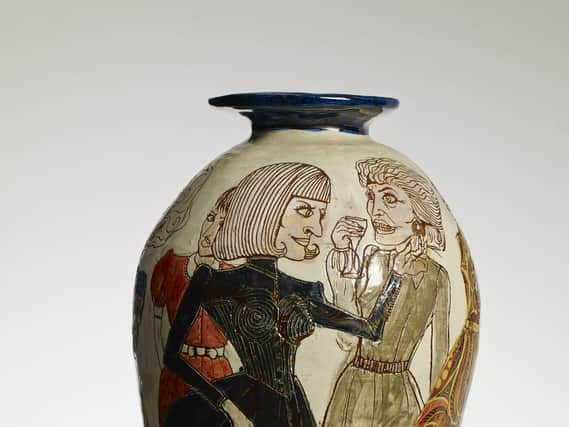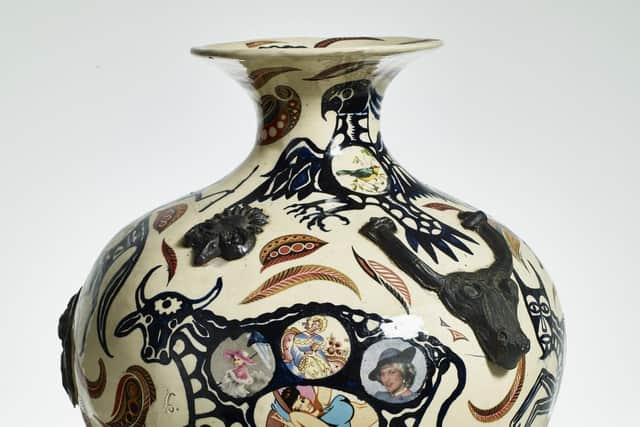Grayson Perry's early works on show in York Art Gallery’s new exhibition


In fact, though he would probably hate the phrase, he has become something of a national treasure. The beginning of his journey to that status is explored in a new exhibition of his early works, Grayson Perry: the Pre-Therapy Years, which opens at York Art Gallery next week.
Organised by the Holburne Museum in Bath, it was put together after their curatorial team issued a call-out asking for anyone who had any of Perry’s work from the 1980s and 90s to get in touch. “It was a shot in the dark but they were overwhelmed with responses,” says Dr Helen Walsh, curator of ceramics at York Art Gallery.
Advertisement
Hide AdAdvertisement
Hide Ad“I think in the end they had around 150 works to choose from and they selected 75 in total to show from that period.”


The scope of the exhibition ranges from 1982 when Perry was first working as an artist and follows his progress up to the mid-1990s by which time he was established on the London art scene. In the works on display, it is possible to see the seeds of the themes that have continued to fascinate the artist throughout his long career.
“It is all there,” says Walsh. “If there weren’t labels on the work, you would know it is by Grayson Perry.”
The edgy social commentary, the provocative satire, the radical politics, all suffused with the artist’s characteristic playfulness and humour.
Advertisement
Hide AdAdvertisement
Hide Ad“Interestingly, he was initially making and selling these pots in order to fund his films and then he realised he enjoyed ceramics and the immediacy of the medium.
There are sections in the show highlighting his interest in potter traditions, others explore his use of text, his references to Essex where he grew up, how he developed his female alter ego Claire, and trying to reconcile himself with his childhood, which was quite fraught.”
During the first UK lockdown last year, Perry co-presented with his wife Philippa from their home, Grayson’s Art Club which encouraged viewers to make their own artworks on a given theme.
Broadcast on Channel 4, the series received a million viewers a week – and returned for a second series earlier this year. At the start of each episode Perry reiterated the vital role that engagement with the arts plays in our wellbeing, saying: ‘It can help us explore our creativity, inspire and console us, and tell us some truths about who we really are’. This philosophy is evident in many of his early works.
Advertisement
Hide AdAdvertisement
Hide Ad“As a young artist he was very much ahead of his time in terms of the personal nature of his work and how he used his art to try and resolve his personal issues,” says Walsh. “He has said that this was his form of therapy before he went into therapy.”
Hence the title of the exhibition. Walsh urges people to come to it, not least because it presents a rare opportunity.
“Most of the works are from private collections and I can’t see them being drawn together again in this way. It is an interesting, visually spectacular show and I think it dispels some of the preconceptions that people might have about ceramics – they can tell fascinating stories and communicate powerful messages.”
At York Art Gallery, May 28-September 5.